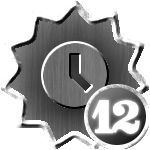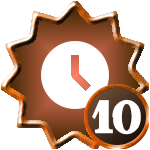-
Posts
44 -
Joined
-
Last visited
-
Days Won
2
John H White last won the day on May 2 2013
John H White had the most liked content!
About John H White

- Birthday 02/05/1931
Profile Information
-
Biography
Born into an unmusical family, at the age of 12, after becoming acquainted with symphonies by Haydn and Mozart heard on the BBC, I lost interest in the pop music of the day (Bing Crosby etc.). The following year my parents bought me a clapped out piano for £8 (that would be $32 at the old fixed exchange rate). Sadly, the touch was so hard that I had to thump the keys to get any sound out of them. In 4 years of lessons, I only got as far as Beethoven's Op 49 No 2 played at half speed. Meanwhile, having heard lots of orchestra music on the "wireless" as we called it in those days, I decided at the age of 17 that most modern composers had lost the plot and I needed to show them the way back onto the straight and narrow clssical path by writing a symphony in the style of my late 18th Century heros. Unfortunately, my lack of knowledge of harmony and counterpoint caused me to abandon the project whilst I got on with the rest of my life. It wasn't until I was in my mid 60s, some years after I had retired with my family to the Isle of Wight, that I came into contact with the Open College of the Arts and signed up for their music writing course. In the 3rd year I took up as my project that symphony which had been going round in my head for all those years. Meanwhile I had acquired a computer and discovered Noteworthy score writing software which I made use of to complete the work I had first envisaged 50 years before (is this a record?).I'm afraid this 1st venture of mine into the symphonic field is a very poor imitation of Haydn and early Schubert but I then went on to produce in the next couple of years a much more mature and up to date ( 1850 style as opposed to 1800) 2nd Symphony in E flat, subtitled "Vectis",the old Roman name for the Isle of Wight, where I now live. I just managed to complete it before the Millenum i.e. just inside the 29th Century.
Sadly, the conductor of our local band, the Isle of Wight Symphony Orchestra, turned it down but, through the good offices of our son in law's violin playing sister, it was played through without timpani by the Wirral Symphony Orchestra at one of their rehearsal meetings in 2002. It seemed to work alright and I noticed that the orchestra, who were playing from sight, got things better on the repeats. Anyway, I learnt a few things there from the conductor on that occasion such as the range of certain wind instruments and the fact the opening movement should have been written in 3/4 time instead of 6/8.
Other works I have completed during and after my course with the Open College include 2 string quartets and a divertimento for wind quintet, which was later privately recorded by a professional wind group.
I rarther doubt if my 3rd symphony will ever get completed in my lifetime, as I have so many other interests to persue, such as building and flying rubber powered freeflight model aircraft, walking and cycling( last year I cycled 66 miles round the rather hilly Isle of Wight to celebrate my 80th birthday.
Over the past 15 years or so, quite alot of my spare time has been taken up with copying out scores of rare 19th Century chamber and orchestral music into Noteworthy and latterly also into Sibelius for uploading to such sites as the Noteworthy Scriptorium and the Classical Archives. I reckon there is so much brilliant out there from that period, that it is hardly worth the likes of me to add my mediocre contributions.
Amongst my current favourite works are Franz Lachner's prize winning 5th Symphony of 1834 and Johann Rufinatscha's 6th Symphony. -
Gender
Male
-
Location
Isle of Wight, England
-
Occupation
Retired Science Teacher
-
Interests
Rare 19th Century music.
-
Favorite Composers
Haydn, Mozart, Beethoven, Spohr, Schubert, Franz Lachner, Ignaz Lachner, Jan Kallivoda,Potter, Sterndale Bennett, Rufinatscha
-
My Compositional Styles
Classico Romantic
-
Notation Software/Sequencers
Noteworthy, Sibelius.
-
Instruments Played
Learning the Cello.
Recent Profile Visitors
The recent visitors block is disabled and is not being shown to other users.
John H White's Achievements
-
Could someone please suggest to me the most authentic sounding orchestral instrument sound fonts? The music software I use is Sibelius 7.13 and I'm wondering if there is a more accurate alternative to Sibelius Sounds. Cheers, John.
-
No Jonas, they are deadly rivals, but competition between them over the years has resulted in many improvements in both programs as they attempt to each copy the opposition's latest features. It is also possible to "translate" a piece written by one into the other, using a program called MusicMXL. Cheers, John.
-
By the way Jonas, as with many other programs, you can download a trial verson of Notewothy for free if you go to www.notewothysoftware.com. If you subscribe to their website newsletters, you can sometimes get special offers on their software from Finale or Sibelius and, of course, certain music software retailers sometimes offer these programs at cut price, particularly if a new version has just come on the market and they wish to off load their old stock. I personally saved up out of my pension to buy Finale a few years back, as it was slightly cheaper than Sibelius. As I was finding Finale rather tough going, I was later glad to take up an Offer from Avid to "upgrade" to Sibelius from Finale at a special bargain price. I notice that Make Music sometimes has similar special offers to "ugrade" from Sibelius to Finale! Anyway, good luck with your music and choice of software. Cheers, John.
-
Hello again Jonas, There are lots of free and inexpensive score writing softwares out there and they all do a good job up to a point ( in the past I have tried Musicator, Melody Assistant, Harmony assistant together with the cheaper versions of Personal Composer and Cakewalk) but none of them have anywhere near the feature set of Finale and Sibelius. It would seem that, as in most things in life, you get what you pay for! I still think that Noteworthy is the best of the less expensive programs. One thing to remember about the relative costs is that Noteworthy is produced and developed by just one programmer, ably assisted by some very knowledgeable users, whereas both Finale and Sibelius have extensive teams of developers, whose salaries have to be paid for together with divdends to the investors in the companies that now own them (Make Music & Avid) Cheers, John.
-
Years ago I used to write music using pencil and paper but, when I came across score writing software that could play the music back to me and print it off, I went completely over to that. Even the less expensive programs such as Noteworthy, which I strongly recommend for people on a low budget, can do things quickly which can take much longer using pencil and paper. Thus, if you need to repeat a phrase you can highlight it, press Ctrl C, followed by Ctrl V as many times as you like. Noteworthy, however, has its limitations. For example, it won't do higher tuplets than triplets automatically, whilst trills and drumrolls have to be written out in full on a hidden stave used for play back. Furthermore, the quality of the play back depends on how good your sound card is at interpreting General Midi unless, of course, you are clever enough to tie the program up with a good set of sound fonts such as Garritan Personal Orchestra. More powerfull software such as Finale and Sibelius are generally able to overcome such difficulties but cost around ten times as much as Noteworthy unless you can prove you are a student or can get them on special offer. Personally, I find Sibelius a bit more user friendly than Finale inspite of its new ribbon style interface. Anyway, so far as I can remember, all of these programs have the facility for writing parts for transposing instruments, such as clarinets, at hearing pitch, which can later be printed out at playing pitch, which saves quite a bit of mental arithmetic when writing them out. I hope this helps. Cheers, John.
-
Its up to you, but I always prefer to start off with a full score of, say, 16 staves rather than a short score of 2 or 4 staves. Thus if the tune in my head is for, say, the flute, I can write it for that instrument straight into the score. No doubt non pianists such as Spohr and Berlioz would have done the same. For a good number of years I used Noteworthy software, which, at $49 a go, must certainly be one of the most reasonably priced Score writers on the market. Its also one of the easiest to learn to use and is well backed up by a good friendly newsgroup and forum. However, I have lately moved on to the much more powerful and expensive Sibelius software which can to do lots of things that Noteworthy cannot do, such as copying and pasting large chunks of score. To accomodate the necessary numbers of staves for a full orchestra it is usefull to have a computer monitor that can be used in portrait mode. As for textbooks on orchestration; I can thoroughly recommend Berlioz's magnificent "Treatise on Instrumentation", but I also find much usefull information in Gordon Jacob's more concise "Orchestral Technique" Personally, being a bit old fashioned, I tend to use as my models.various early to mid 19th Century symphonies by Beethoven, Schubert, Spohr, Lachner, Kalliwoda and Raff. Best of luck, John.
-
My Symphony No 2 in E flat, "Vectis", through the good offices of my son in law's violin playing sister who lives on the Wirral Peninsular near Liverpool, was played through without timpani by the Wirral Symphony Orchestra at one of their rehearsal meetings back in 2002. Despite the lack of proper percussion, it seemed to work alright. By the way, "Vectis" is the old Roman name for the Isle of Wight off the south coast of England where I now live. Some years later a professional wind band kindly made a private recording of my Divertimento for wind quintet. I doubt very much if I shall ever get to witness a public performance of either of these works during my lifetime, having passed my 81st birthday, even though I'm still just a teenager inside. Cheers, John.
-
I note with concern that, according to posts on the Sibelius help forum, that Avid, who now own Sibelius software, are planning to close its London office and move development elsewhere, possibly to eastern Europe. This will mean that the team so ably led by Daniel Spreadbury will no longer be in charge of its future progress. John.
-
Here is an MP3 file of the piece I wrote for string quartet 10 years ago in memory of those who lost their lives when the Twin Towers were attacked. I called it "Ground Zero".Track5.mp3
-

Re-naming instruments at start of score in Sibelius.
John H White replied to John H White's topic in Tech Archives
J.H White, to change the name you don't need to go to house style, just in the first page of your score, you double click any instrument name to edit, .. also in the subsequent pages you do the same to edit the short name (like Hn. in F), (you only have to change the short name in one page and will be changed in all pages) Double click in the name, Many thanks for that tip Daniel, it makes life so much easier for me. It's great to have someone like you on this forum; I'm sure that easy method of changing instrument names isn't mentioned in the Sibelius 6 Reference Book. Cheers, John. -

Re-naming instruments at start of score in Sibelius.
John H White replied to John H White's topic in Tech Archives
Many thanks, gentlemen, for your kind replies. However, I'm afraid I couldn't understand how to get either method to work. Sorry I'm so thick! Anyhow, I've now managed to work out my own way of achieving the desired result. Firstly, I deleted one of the 2 "Horn in F" staves and edited the remaining one under House Style to read "Horns 1 & 2 in F" I then went to Create,instrument and from "all instruments" selected "Horn in F(bass clef)" On adding this to the score I just had to edit its name to "Horns 3 & 4 in F", using the same procedure as before. Finally,I went to Create, Clef to substitute a treble clef and, BINGO it worked! :) Being new to Sibelius after so many years of easy-to-use Noteworthy,I feel rather like a novice chess player attempting to pit his skills against a grand master! Cheers, John. -
I want to have 2 pairs of horns in F on two separate staves. Using the House Style dialogue box to edit "Horn in F", I can only get either "Horns 1 & 2 in F" on both staves or "Horns 3 & 4 in F" on both staves. Of course, I really want "Horns 1 & 2 in F" on the upper one and "Horns 3 & 4 in F" on the lower one. Could someone please let me know how this can be done.
-
"Just press the flat button two times when inserting the second layer. It maintains the flat for the measure from the other layer and hides the flat on the new layer so that you don't have two flats next to each other. Just tried it myself." Many thanks for that tip, what a brilliant idea! Cheers, John.
-
What happens, James, is that I insert, say, a 1st flute(tail up) note with a flat accidental into the score, using the mouse and then follow it with an identical 2nd flute( tail down) note on top of it where I want the the 2 flutes to play the same flat note in unison. This invariably results in a double flat appearing in the score. It wouldn't matter so much if I got 2 sharps, as we have a distinctive separate symbol for a double sharp. When I'm working in Noteworthy, I can put the tail up and tail down notes in, one on top of the other and then add a flat to the highlighted pair, which then only shows up as one flat. Its a great pity that this does not work with Sibelius. I think my best course of action will be to go to the Sibelius web site and report this as a possible bug in their otherwise excellent software. Cheers, John.
-
Many thanks, gentlemen, for your helpful replies. I'm sorry I failed to mention that this is a problem I'm having with Sibelius. Cheers, John.




